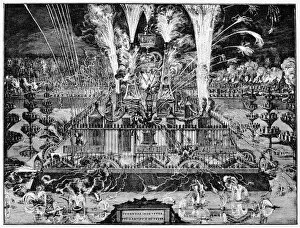William Iii Collection (page 9)
William III, also known as William of Orange, was a prominent figure in European history
All Professionally Made to Order for Quick Shipping
William III, also known as William of Orange, was a prominent figure in European history. He played a significant role in the Battle of the Boyne in 1668, where he showcased his military prowess and leadership skills. The battle marked a turning point for him and solidified his position as a powerful ruler. The Ceiling of the Painted Hall, created between 1707-14, depicts William III's reign and showcases his influence on British society during that time. It serves as a visual representation of his impact on art and culture. King William III (1650-1702) is often remembered for holding the Bill of Rights in his hand. This document symbolizes the establishment of constitutional monarchy in England and reflects William's commitment to upholding individual liberties. In various artistic depictions such as engravings from the 18th century or lithographs from later years, we see King William III alongside Queen Mary. Their partnership was crucial to their joint rule over Great Britain. The statue of William Prince of Orange stands proudly at Brixham Harbour in Devon, England. It serves as a reminder of his legacy and contributions to British history. Ballads like "Bless the glorious memory of King William that crossed the Boyne water" immortalize King William III's triumph at the Battle of Boyne through poetic verses passed down through generations. However, it is important not to forget about James II's flight from power which led to this momentous event. Known as "A Lost Cause, " James II's departure paved the way for King William III's ascension to power.









